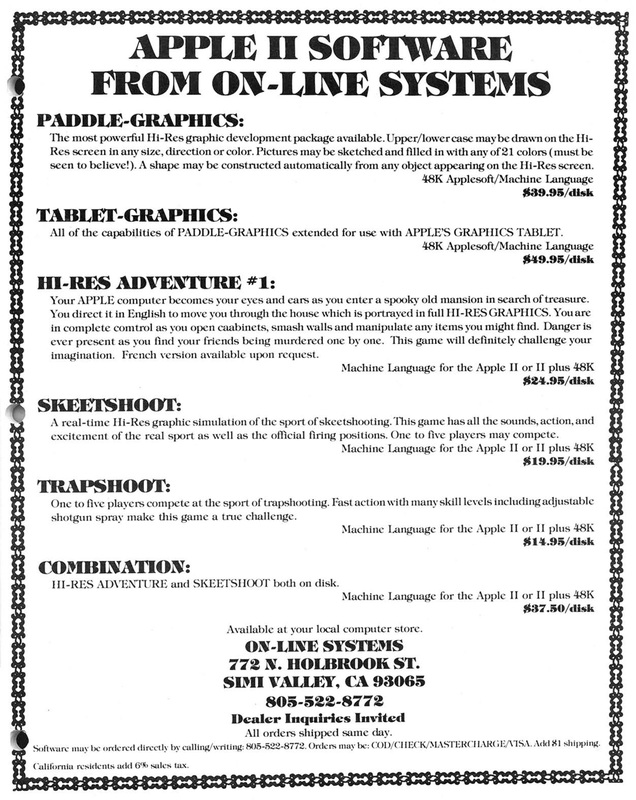|
A while back, I shared a special archival find: the first ad ever printed for Sierra On-Line/On-Line System's Mystery House, from the May 1980 issue of MICRO 6502. While this ad has long been "findable" on the 'net, it required a special bit of diligence to go looking for this ad in particular and circulate it as a historical document. The ad On-Line ran in June 1980 was the same as May. But in July 1980, the ad changed rather dramatically. The long, onerous text has been cut. Moreover, the ad moved far forward in the magazine, all the way to page 1. When eager readers flipped the cover on their July issue of MICRO 6502, they'd have been staring at the latest selection of software offerings from On-Line Systems. Obviously, On-Line was doing quite well for themselves--they no doubt paid a considerable fee for "page 1" property. The blessedly improved layout and typography also speaks to a quickly refining profile. Gone is the home coupon style sales/shipping form crammed into a corner, although the Williamses were still receiving orders at their home and on their home phone line.
The cassette versions of Trapshoot and Skeetshoot (available in the previous two months' ads) have been jettisoned. Two new pieces of software are offered in this July ad: Paddle Graphics and Tablet Graphics, both graphics utilities for enterprising programmers ("Tools for Making Tools" as Steven Levy terms this kind of software in Hackers). For a talented programmer such as Ken, these programs were likely easy one-offs derived from his experience designing Mystery House's hi-res graphics and the new work he was doing developing a machine language system for Roberta's upcoming project at the time, The Wizard and the Princess (the first adventure game with color graphics). What was called Hi-Res Adventure ("Mystery House") in the May and June issues is now Hi-Res Adventure #1, an anticipatory numbering gesturing to a future series of hi-res adventure games. The copy also gives a subtle clue to one of the more frustratingly unprompted puzzles in the game: you'll need to smash a wall. (Roberta Williams had a real kick for making her players deconstruct houses). My favorite part? The description for Hi-Res Adventure #1 mentions "French version available upon request." What I wouldn't give for a French copy of Mystery House! Who was doing your translation, On-Line? Call for Papers // SCMS 2014 Panel |
Archives
March 2020
Categories
All
|

 RSS Feed
RSS Feed